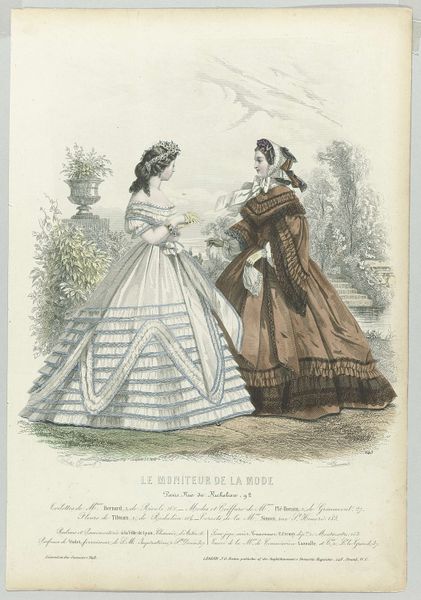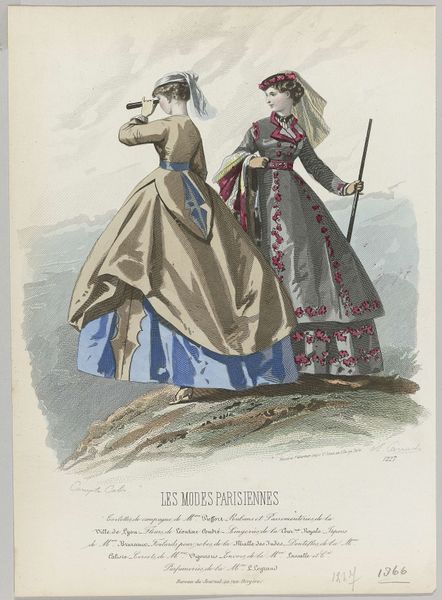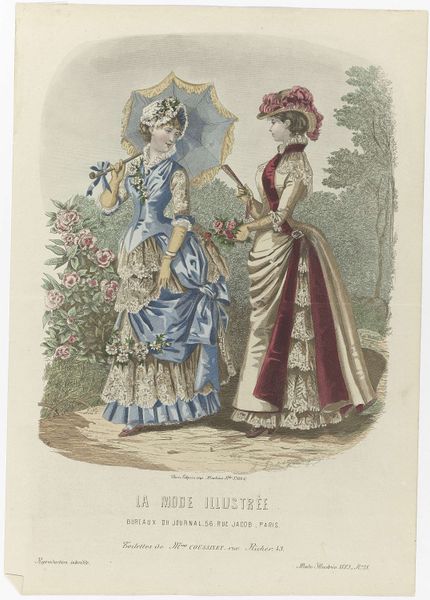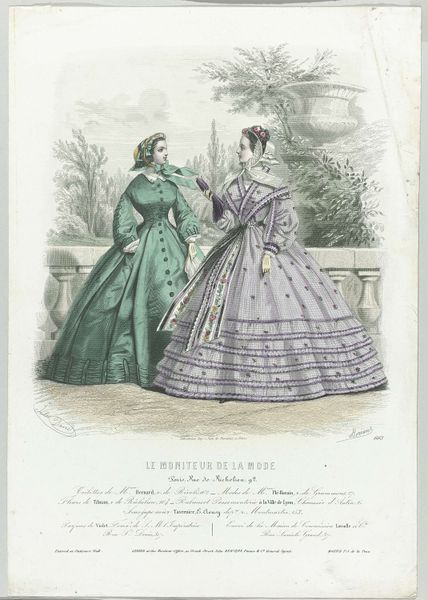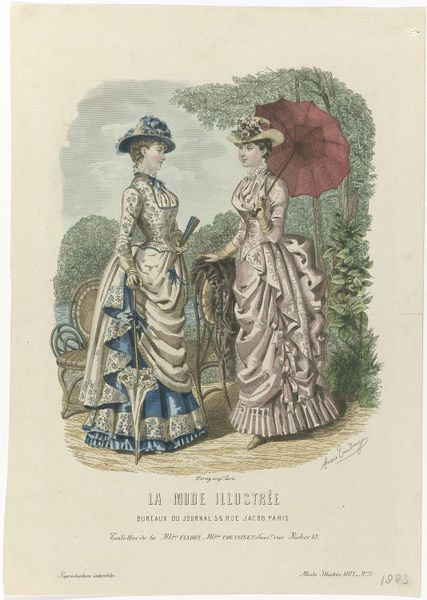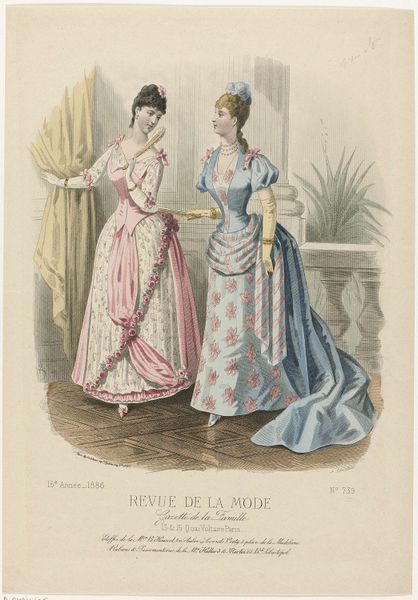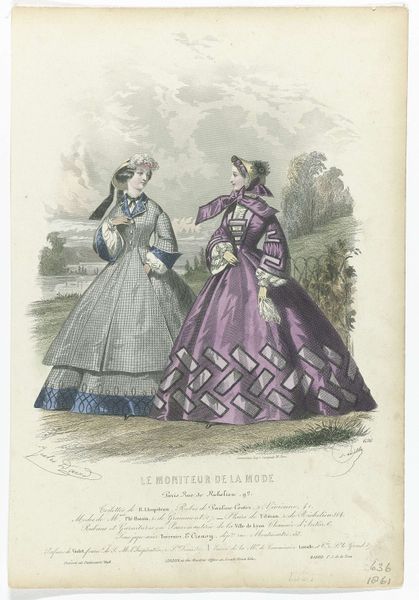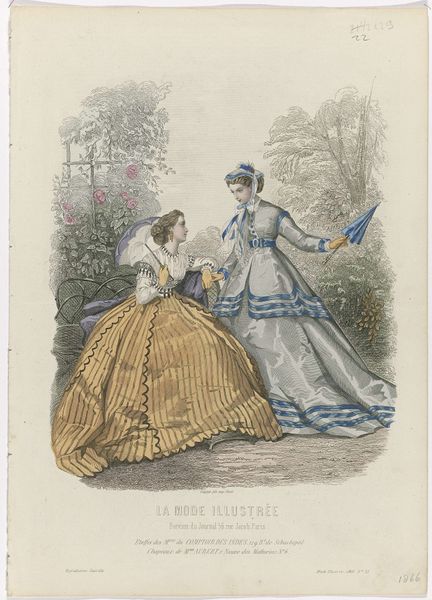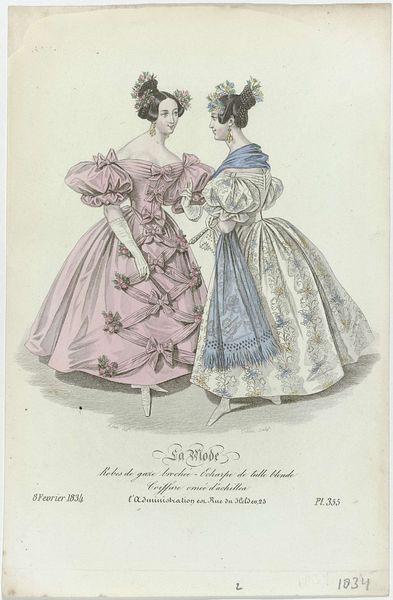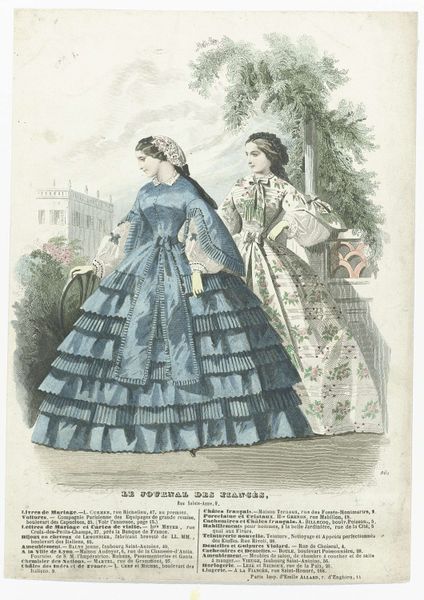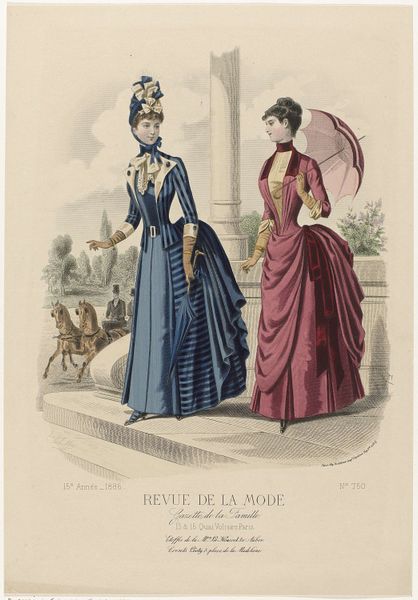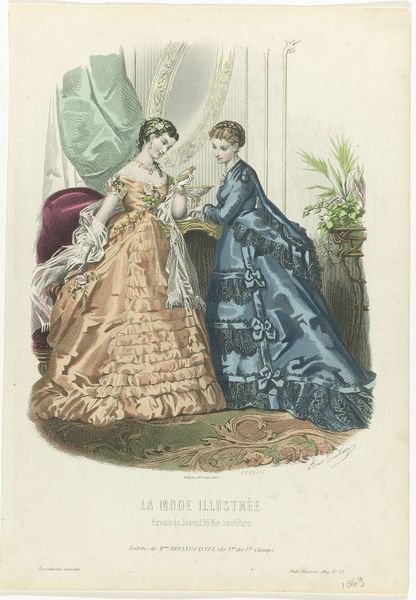
Dimensions: height 276 mm, width 212 mm
Copyright: Rijks Museum: Open Domain
Editor: So, here we have *Les Modes Parisiennes, 1866, No. 1220*. It’s a lithograph print, showcasing, seemingly, two women in elaborate dresses. The whole thing has a certain quiet elegance, though perhaps a touch stiff. What stands out to you when you look at this? Curator: Immediately, I consider the historical context. Fashion plates like this were circulated widely, shaping and reflecting bourgeois female identity. Think about the rigid social expectations of women in 1866—dress became a crucial tool for self-expression and signaling social status, even as options remained limited by patriarchal norms. Who was dictating these modes, and for whom? Editor: That's a great point! I didn't even consider who this image was for. Curator: Exactly! And what about the visual language? Notice how the emphasis on detail in the dresses overshadows the figures’ individual characteristics. This points to a potential tension – were women being encouraged to define themselves through consumerism? Also, where do you think they're going? Editor: I didn’t catch that! I imagined they were enjoying the gardens and that they have nowhere to go. Are you saying that there's no joy here because their clothes overshadow their identities and they are enslaved to fashion and the need to conform to social norms? Curator: Precisely! We can analyse it to discern how women's identities at the time were intrinsically linked to—and perhaps confined by—their sartorial choices, reflecting a power dynamic at play. Fashion, in this context, wasn’t just about aesthetics; it was a language of constraint. Editor: This has completely changed my initial reading! I saw elegance; you've shown me potential imprisonment. It really puts the image into a new, much darker perspective. Thank you! Curator: It’s about questioning the surface, digging into the ‘why’ and ‘how’ to reveal the complex social narratives embedded in even seemingly straightforward images. The power of art lies in this capacity for constant re-evaluation.
Comments
No comments
Be the first to comment and join the conversation on the ultimate creative platform.
